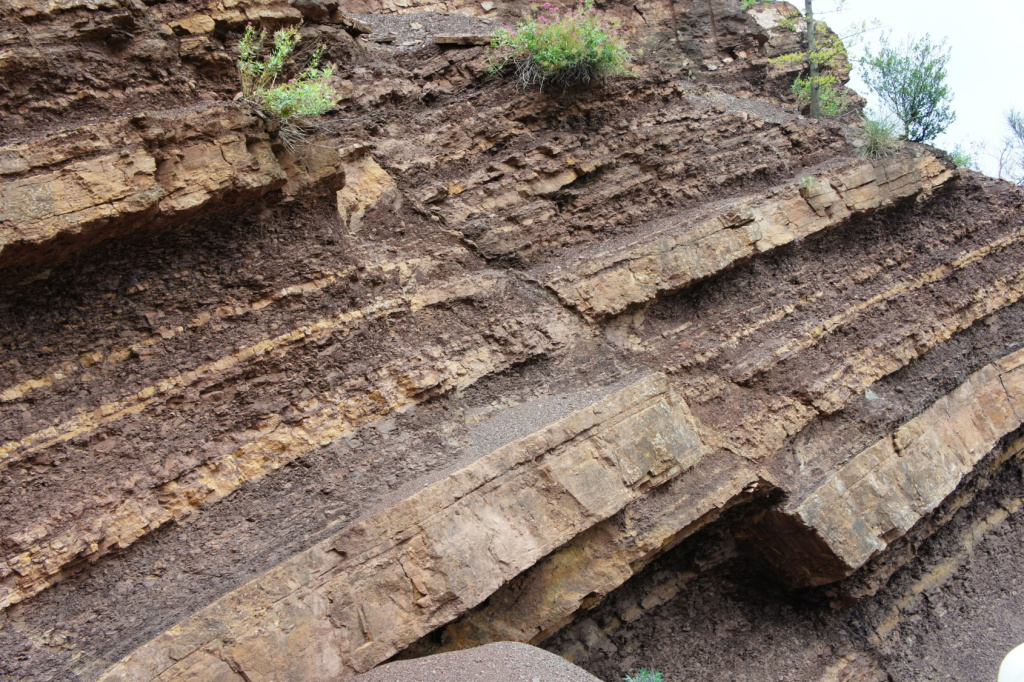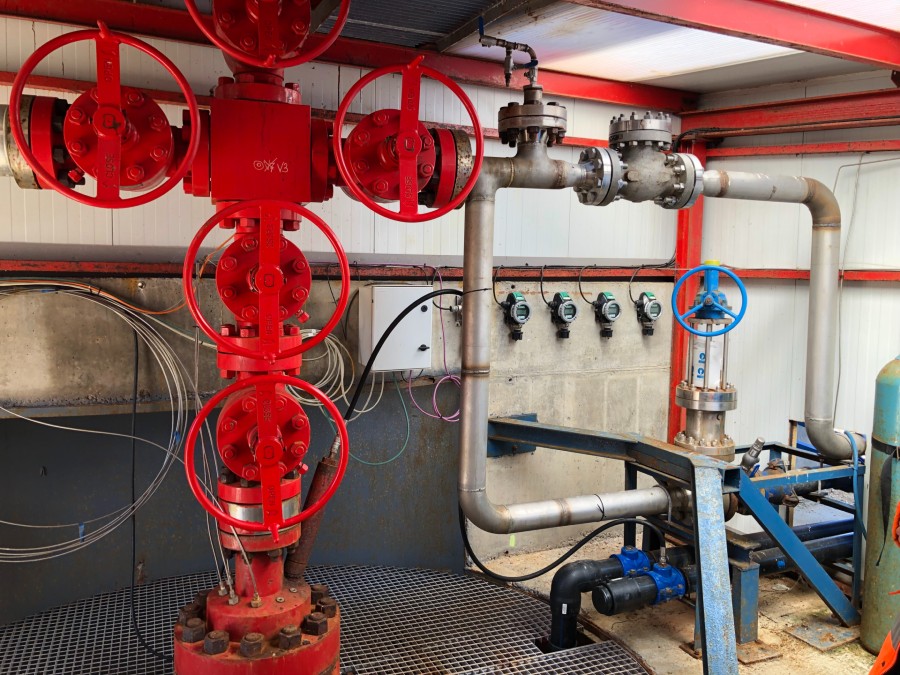The Norwegian CCS Research Centre (NCCS) conducts research on all aspects related to carbon capture, transport and storage. Among the NCCS partners are two institutes with worldwide recognition in the field of geomechanics: NGI in Oslo and SINTEF in Trondheim. Both institutes are recognised for pioneering work related to the oil and gas industry, helping put Norway in the forefront of offshore technology development.
Through NCCS, both institutes have established collaboration on several geomechanics topics that will benefit them both, the NCCS research output, and future CCS implementation in Norway and beyond. Developing national collaboration that builds on decades of oil and gas experience also provides a template for future collaboration with other institutes and private companies working in the CCS ecosystem.
The importance of geomechanics for CCS and Norway
Simply stated, geomechanics is the science of investigating rock and soil response to stresses and fluid pressure changes in the subsurface and has application from building and structure foundations, tunnel construction, mining operations to deeper offshore structures such as wells.
Even though geomechanics is only one of the disciplines at work in the oil industry for successful exploitation of offshore fields, it has far-reaching consequences in all operational phases, from drilling of wells, through production of oil and abandonment of the well at the end of the field’s life. Geomechanical analyses will ensure stable wells during drilling and production, by avoiding collapse of the surrounding rocks due to stress changes and fluid pressure changes with time.
CO2 storage can be seen as a reverse operation to oil production: instead of subtracting fluid from the porous reservoir rocks, one injects CO2. By doing this, the stresses and fluid pressure will again change, mostly in reverse mode to oil production. Thus, geomechanics can also yield valuable insights to reduce risks such as leakage of the stored CO2, either near the injection wells or farther out, at the edges of the reservoir, where faults could be reactivated.
NCCS activities on geomechanics
In NCCS there are two tasks with focus on geomechanics. In Task 10, CO2 storage and site containment, geomechanics is an important aspect for the near well area. Whereas within Task 9, Structural derisking, geomechanics are important for fault stability and leakage quantification.
Learn more about CCS
Join our newsletter to stay updated with all the latest research results and news from NCCS: The Norwegian CCS Research Centre.
The two tasks are trying to improve the collaboration by highlighting the areas of common interest and identifying geomechanical expertise within conventional oil and gas projects with relevance for CO2 storage activities.
Collaboration on CCS geomechanics: now and in the future
In October, SINTEF hosted a workshop with researchers from SINTEF, NGI, NTNU and UiO as well as industry partners from Equinor, Total, Vår Energi and Lundin for presentations on geomechanics and discussion of collaborating activities.
The program included some presentations with direct application for Norwegian CCS sites whereas other presentations focused on methods applied in traditional oil & gas projects with potential for direct application addressing the challenges in ccs site development. This gave some interesting topics for further discussion and future collaboration.

Models for casing failure
NGI has recently developed new solutions for calculation of well deformation. The models are developed to improve well design for reservoir production and depletion. The work combines the geomechanical understanding of the formation and the interaction with the well.
The model demonstrates calculation methods for formation induced strain in wells and shows promising results for strain monitoring along wells in depleted reservoirs. Mechanical interaction between a CO2 injector and the formation can be expected for most CCS projects under development. Further applications of this model for CCS project could be relevant, particularly for reservoirs with large pressure changes either before or during CO2 injection.
These presented casing failure investigations are highly relevant for the focus of task 10, namely well integrity and geomechanics of the near-well area. This could extend our investigation beyond well cement to address steel casing failure modes.

Reservoir scale geomechanics
Stress changes in the shale caprock may vary considerably from location to location over a large reservoir. Monitoring of the integrity of such a caprock depends on correct interpretation of repeat seismic surveys.
These surveys monitor the changes in acoustic velocities, which reflect changes in fluid saturation in the reservoir, such as CO2 replacing brine or brine replacing oil. However, these changes also occur due to stress changes in the sealing caprock and shale overburden. What type of change is to be expected depends on the stress path, that is, how each component of stress in the different directions changes in response to solicitation from the reservoir at a given location. Naturally, any modelling effort needs calibrated input parameters, taken from laboratory studies.
In fact, NGI and SINTEF have been actively testing the Draupne shale from a core donated by Equinor. This shale is representative of caprock formation in the North Sea in areas where CO2 storage is considered. The stiffness contrast between formations was shown in a presentation from another NTNU PhD (not in NCCS) to be important in determining the expected stress path and hence velocity change.
Next steps on collaboration, within NCCS and beyond
Two aspects were discussed in detail after the workshop: What is the main outcome of this kind of workshop, and how does it trigger application of own research focused on CCS problems?
The workshop was a good opportunity to learn about the strengths and challenges of each research institute and university collaborating in NCCS. The presenters felt that direct interactions such as in this workshop were very useful to get new ideas and fill the gap in research work, where suggested methods or models could help in reaching the goals more rapidly, even if participants were not working directly on the same problem. It was also highlighted that although we have different approaches to some problems, we are trying to solve a common goal. All appreciated the opportunity to get to know each other and get familiar with what other research groups are doing.
The workshop very much triggered thoughts and initiatives around new activities and how ongoing work could be applied with direct application for CCS project development. We are planning to follow this up in 2021. More information about the research activities on geomechanics currently undertaken within the two tasks can be found here:
NCCS Structural Derisking (Task 9): https://www.sintef.no/projectweb/nccs/research/structural-derisking/#/
NCCS CO2 Storage Site Containment (Task 10): https://www.sintef.no/projectweb/nccs/research/co2-storage-site-containment/#/
We plan to continue the fruitful collaboration in 2021 and perhaps increase to at least two working meetings where researchers can suggest further work and cross-pollinate modelling efforts, exchanging information and elements to be included in each other’s models.
For more information about geomechanical work in NCCS tasks 9 and 10, please contact:
Pierre Cerasi, Sintef Industry
Elin Skurtveit, NGI
Learn more about CCS
Join our newsletter to stay updated with all the latest research results and news from NCCS: The Norwegian CCS Research Centre.









Comments
No comments yet. Be the first to comment!